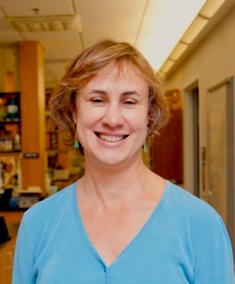Stand up for Science: Practical Approaches to Discussing Science that Matters
Expert Voices Gallery / Lesson 46 of 47
Expert Voice Q&A - Michele Swanson
0 minutes

Information about Michele Swanson
What is your name, title, and role at the University of Michigan?
Michele Swanson, PhD, Professor of Microbiology & Immunology and Director, Office of Postdoctoral Studies
Why are your public engagement efforts in science media important (to you and/or to the cause you’re working to promote)?
As is true of most academic scientists, both my graduate and postdoctoral training and my laboratory’s research have been supported by public funds. To maintain public trust and support for the academic science training and research enterprise, scientists must recognize and act on our responsibility to share with our public stakeholders our exciting discoveries and their promise for improving life on our planet. The American Society for Microbiology podcast “This Week in Microbiology” is one way to do just that.
Michele Swanson on Audience
Who do you interact with when working in science media? What makes this audience different from other groups that you might interact with?
Since our podcast is freely available to any interested listener, here and abroad, our audience is diverse. TWiM receives inquiries from high school students and teachers, current and retired health care workers, trainees and fellow research scientists, and a wide-range of self-proclaimed “science junkies”. Although the depth and breadth of their scientific training varies widely, our listeners share a curiosity and “gee-whiz!” wonder for the microbial sciences.
What suggestions do you have for making interactions with science media producers or consumers as effective as possible?
Avoiding jargon and technical details is my first rule. Whenever possible, I try to develop metaphors to illuminate particular processes. For example, in a recent episode we described a beautiful mechanism that equips bacteria to judge when to fortify their outer membrane in response to temperature fluctuations. Certain proteins and their side chains act like a “caliper” to measure the thickness of that key barrier.
What is the biggest challenge you face when trying to work with science media producers or consumers? What is the biggest reward?
Unlike teaching in the classroom, on the podcast we can’t see our audience or field their queries in real time. The feedback loop is still there, through email and conversations with listeners we meet at conferences; but it’s slower. Since much of life in research is highly focused---both by topic and location---it's a pleasure and privilege to explore a wide range of interesting new science and share it with a diverse and appreciative community.
What are you trying to accomplish when you write to or speak with science media producers or consumers?
Through our podcast, I aim to demystify academic research and break down the barriers that separate scientists from our public shareholders. Hopefully, a number of them will choose to pursue a career in science, encourage a friend or family member to do so, and to be vocal in their support of publically and privately funded research and training.
Michele Swanson on Messaging
When you’re planning to interact with science media producers or consumers, how do you decide what you want to focus on? If a scientist wanted a single idea to “stick” in the mind of science media producers or consumers, what advice would you give them as to how best to shape/pitch that idea?
To connect with our audience, it is essential that our story-telling highlights the “Why”, not just What or How an experimental study was done. We also try to select research articles that are likely to touch their lives – news how the microbial communities in our gut shape health and disease, or how yeast growing on grapes secrete chemicals that attract fruit flies, which in turn carry some microbes to new vines.
Michele Swanson on Narrative
Do you use stories or narratives as a tool to communicate with science media producers or consumers? If so, what kinds of narratives? What kinds of documents or presentations are most effective at capturing and maintaining science media producers 'or consumers’ attention?
To make science come to life, in each episode I profile the graduate student or postdoctoral fellow who led the experiments. By sharing their stories of how they became interested in science, the path they took to research, the other scientists they worked closely with to complete the project, and their personal recollections of especially exciting – or puzzling – days in the lab, listeners can more easily envision the challenges and the joys of a career in research. Perhaps more importantly, these profiles challenge stereotypes by vividly illustrating that scientists come from many walks of life and follow a variety of paths, both professionally and personally.